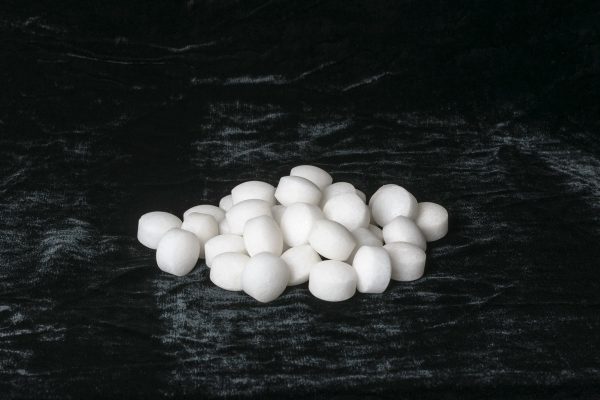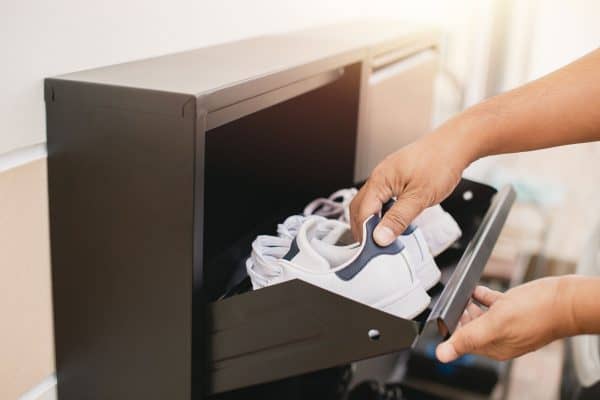Are you looking for ways to protect your food from pesky mice? Are you wondering if using plastic bags or Mylar bags is enough to ensure that your food stays safe from these house pests? That's what we asked experts and here's what they said.
Mice can easily chew through plastic or Mylar bags. If you're using these food packages, it is recommended that you put them inside sturdy plastic buckets, glass, or metal containers as reinforcement for your protection against mice in food storage areas.
Keep on reading to learn more about mice being able to eat plastic bags and Mylar bags and find out how to mouse-proof your food storage. We'll also share with you how to clean your home after a rodent infestation. Let's get started!
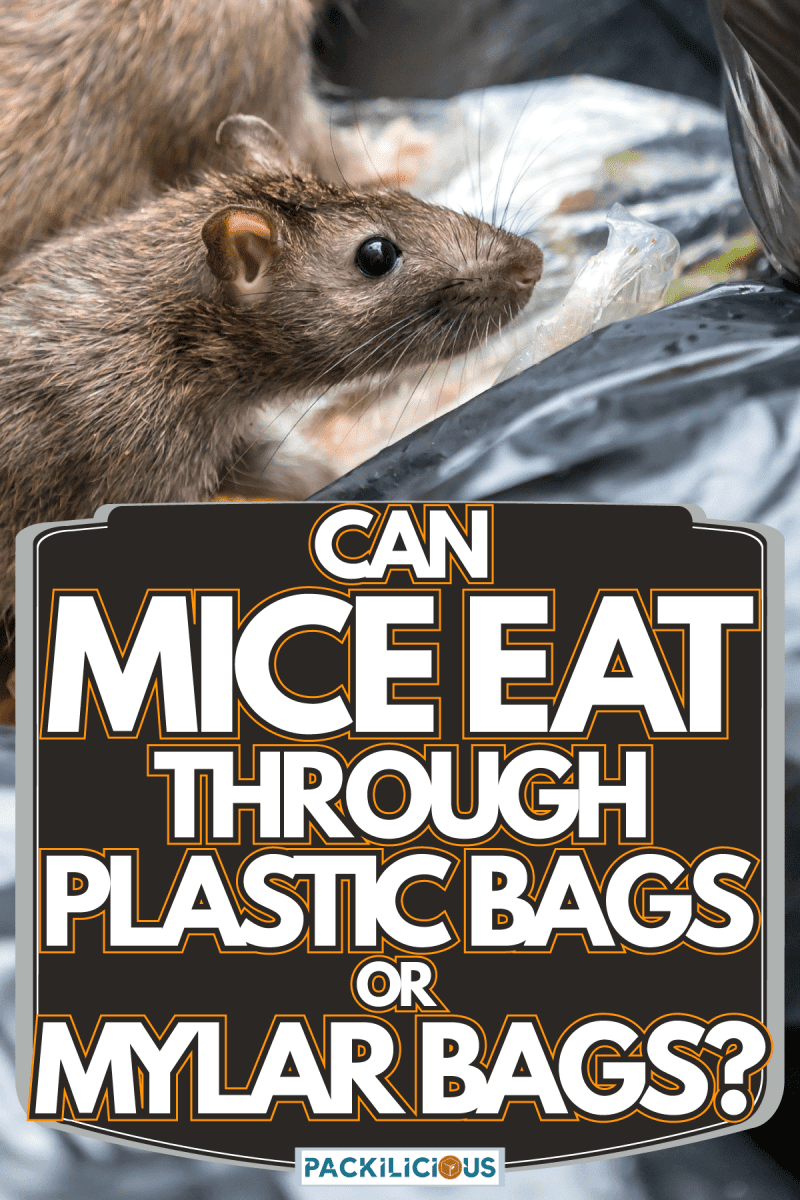
Do mice eat plastic bags?
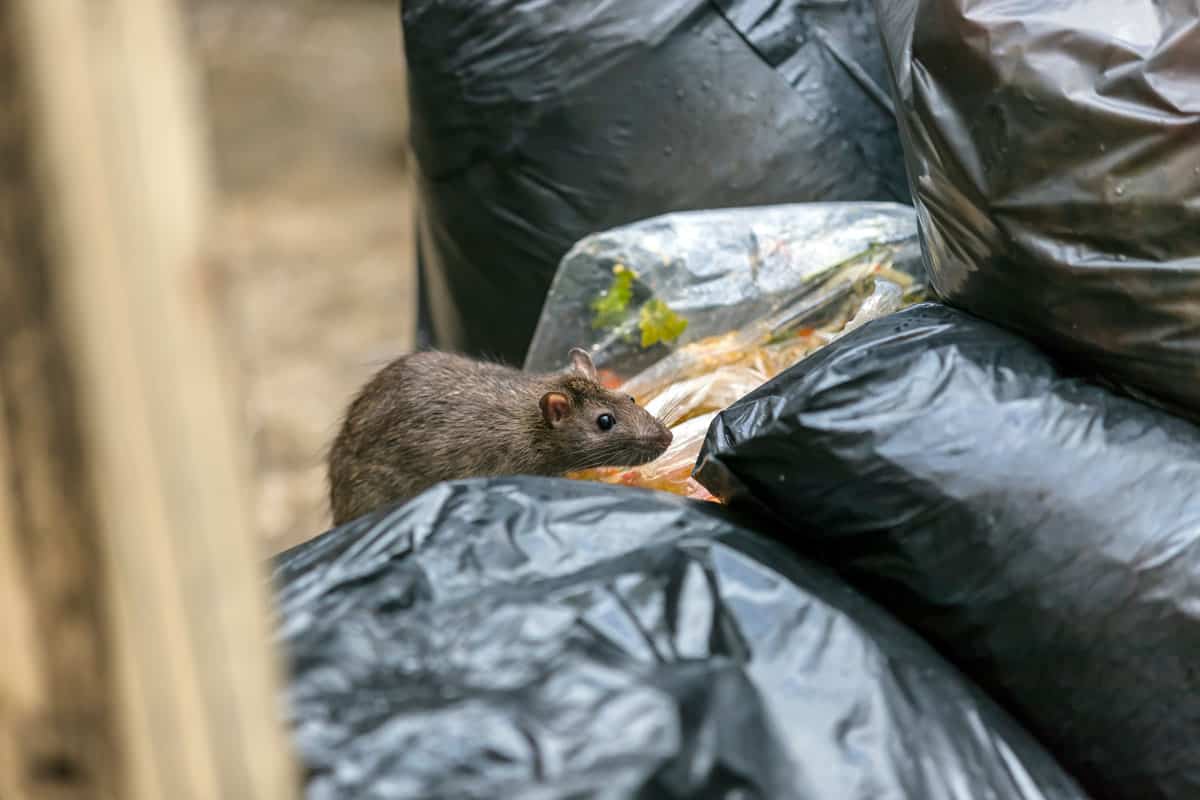
Imagine this. The weather has been really bad for the past couple of days and you can't go out to do your grocery shopping. But you're confident that your pantry is well-stocked, thanks to your food packing skills.
So, you go and check what you can cook for your family, and to your horror, you find out that the food that you've stored has all gone to waste because mice found their way through your storage! What a hassle, right?
Mice are one of the enemies of food storage. Of course, as homemakers, we want to protect our food from these house pests! Truth is, as long as they have access to a food source, they'll continue to thrive in your home. They see this as a "Welcome" sign, an invitation to nest in this area and feel right at home.
That's why experts advise us to make sure that we remove access to food sources by securing our food pile in sturdy food-grade containers. This is one of the sure-fire ways to get rid of mice. Instead of killing them, remove their main source of nutrition. Don't make them feel welcome in your home.
Speaking of proper containers, take note that plastic bags and Mylar bags are not mouse-proof. Surprisingly, despite their small size, mice can easily eat through these bags and have access to your stored food.
If you want to store your food stock in Mylar bags or plastic bags, you need to reinforce your storage. You can put these packs inside plastic buckets, and metal or glass containers for added protection. Make sure that your reinforced food storage is still air-tight so you can preserve the quality of your dry food items.
What containers are mouse-proof?
Since mice can eat through plastic and Mylar bags, you might be wondering which containers are rodent-proof so that you can have peace of mind that your food is stored safely.
Here are the materials of food containers that you can invest in to ensure that your food pile is safe from mice infestation.
Thick Metal
It would be pretty much impossible for mice to chew their way through thick metal. Their teeth aren't powerful enough to sink through this material and this would only frustrate them in the end.


Check out this stainless steel airtight canister on Amazon.
Glass
Another material that mice won't be able to eat through is glass. Aside from being thick and durable, it also has a smooth surface that makes it hard for these pests to hold onto it much less eat it.


Click this link to find these glass storage containers on Amazon.
Heavy-duty Plastic
Hard plastic is probably the cheapest option here. We reiterate that you should use heavy-duty plastic tubs as mice can eat through other plastic types.


Find this heavy-duty white bucket with a lid on Amazon.
Just take note that the containers you decide to buy should be airtight to prevent oxygen from entering. Oxygen is the enemy of food preservation and long-term food storage. When you give space for air to enter, it would lead to oxidation which negatively affects the quality of your stored food.
It's also best to put a label outside of your mice-proof containers so that you know what's inside and when you should have them consumed to be able to enjoy your food stock in their best quality.
What's the fastest way to get rid of mice?
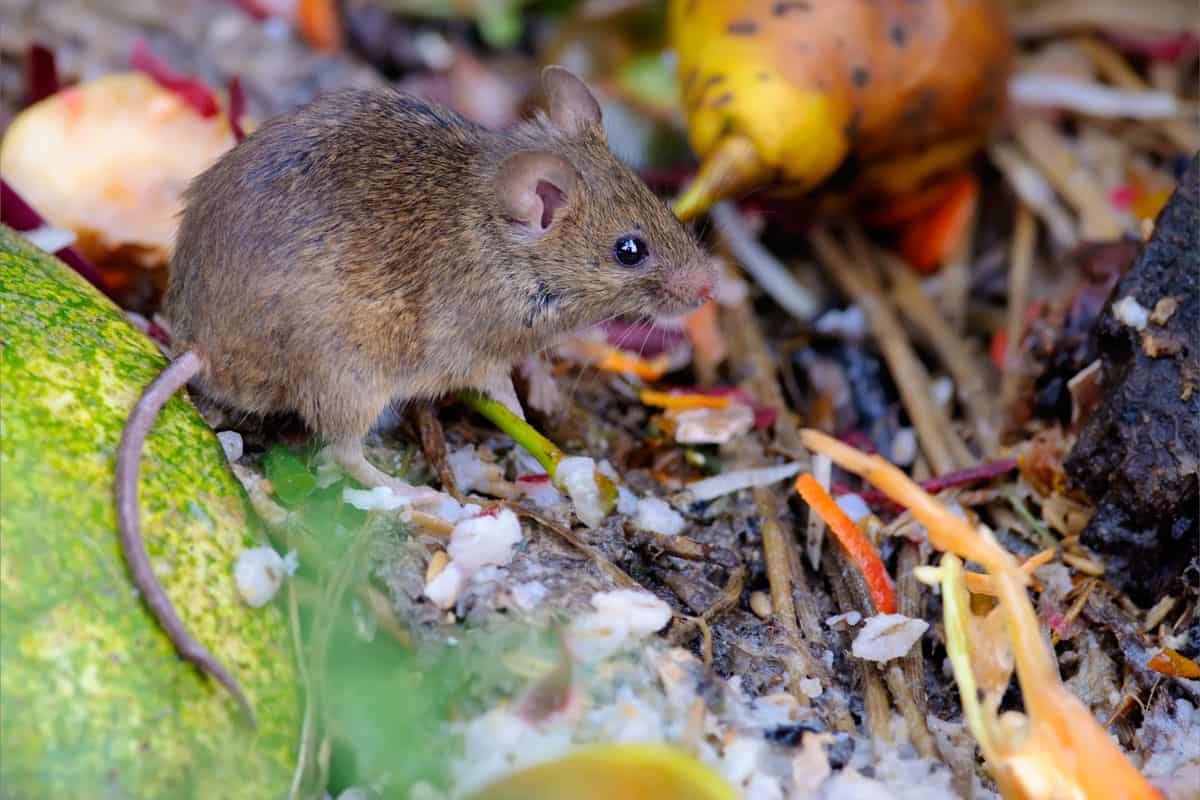
Keeping your food stock in rodent-proof containers will keep them safe and maintain their good quality. However, it is just one part of dealing with mice infestation in your home. You still have to address their presence inside your home or you risk your family's health.
You can acquire many diseases from contact with mice such as leptospirosis, salmonellosis, infectious jaundice, and pulmonary fever. Mice also pose a fire risk when they start destroying your electric cables. That's why you should strive to have the situation under control.
Here are some homemade remedies to solve this problem.
Peppermint essential oil
If you're into EOs, you can put drops of peppermint oil on cotton balls and put them in your pantry or places where mice usually go to. Experts say that inhalation of peppermint scent can kill mice almost instantly. It causes their lungs to collapse and they'll find it hard to breathe.


Check out this pure peppermint oil on Amazon.
Ammonia
Ammonia has many uses. Aside from helping you clean your house, it also serves as an instant rat-killer. Its pungent smell is like poison to them. You can mix ammonia with water and a small amount of liquid detergent. Place the bowl where mice can be found and wait for the results.


Click this link to find this product on Amazon.
Black pepper
Again, the pungent smell of this spice is harmful to mice. It constricts their lungs until they cannot breathe.
Onions
Onions also have a pungent smell that repulses the rat's very sensitive olfactory nerves. While they might not necessarily kill mice, they would surely drive these pests away from your home.
Potato Powder
If you have this in your pantry, just sprinkle some in the mouse trail. These little creatures sure love their carbs and would feast on this potato powder. What they don't know is that once this food reaches their intestines, it causes them to swell up, leading to death.
These are just some of the ways for you to get rid of mice the natural way without having to use harsh chemicals that could also be harmful to your pets and other members of your household.
How to clean up after a mice infestation
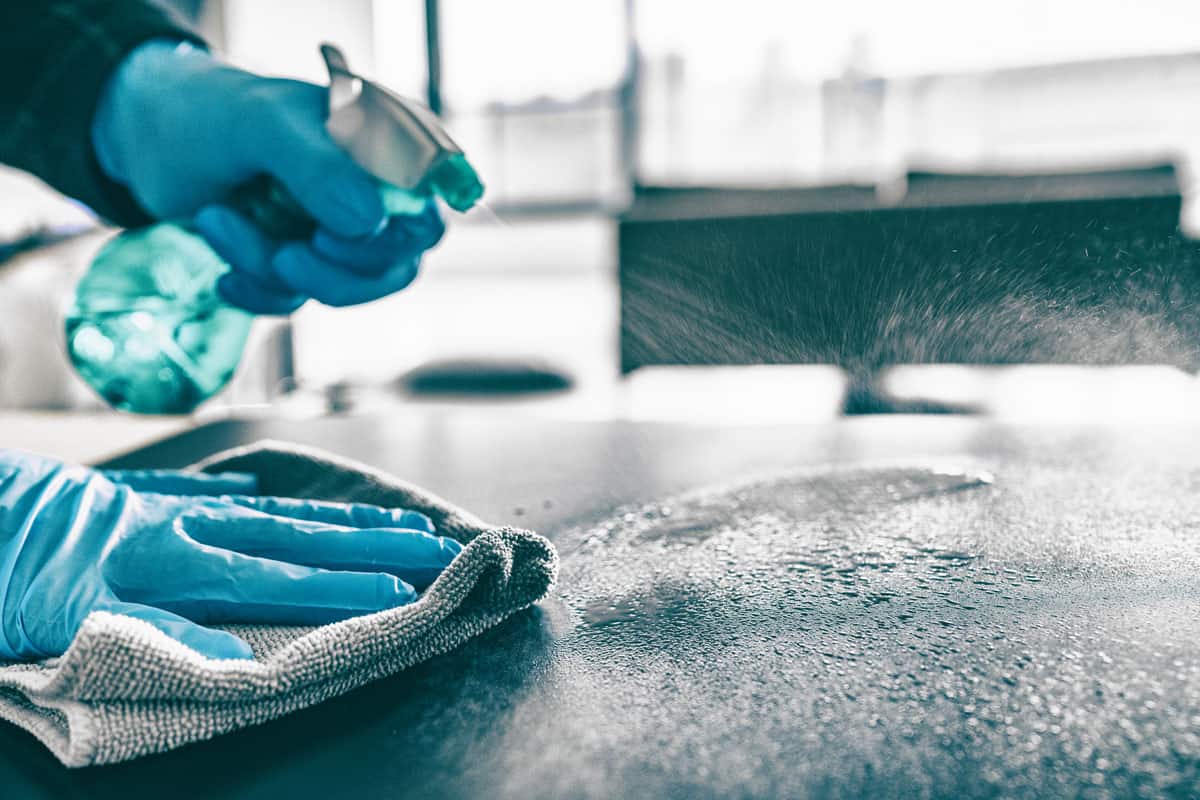
Now that you've gotten rid of those little creatures, it's time to do a thorough house cleaning. Mice carry viruses and bacteria that can cause different diseases so it's best to ensure that your house is clean and disinfected for your own good.
Here is what you need to do.
- Ventilate the area. Open the windows and doors to allow fresh air to enter.
- Prepare your bleach solution by mixing 1 part bleach with 10 parts water. Transfer to a spray bottle.
- Wear protective gear such as gloves and goggles.
- When there is a dead mouse, droppings, or urine, spray areas with the bleach solution to disinfect. Let it soak for about 5 minutes.
- Do the same to nesting areas.
- After disinfecting, carefully remove the dead mouse, droppings, or nesting materials from the area. Use a paper towel to pick them up and place them in a garbage bag. Do not sweep them off the floor to reduce contamination.
- Put the remains inside another plastic bag and seal them tightly before throwing them away in a covered trash bin.
- Clean and disinfect the floor, shelves, countertops, and other areas that have been exposed to mice.
- Take off your gloves and wash your hands with soap and water
That's it! You've already cleaned your house after the horrible mice infestation. May it never happen again so make sure you do all the necessary precautions to make your home mouse-proof.
Final Thoughts
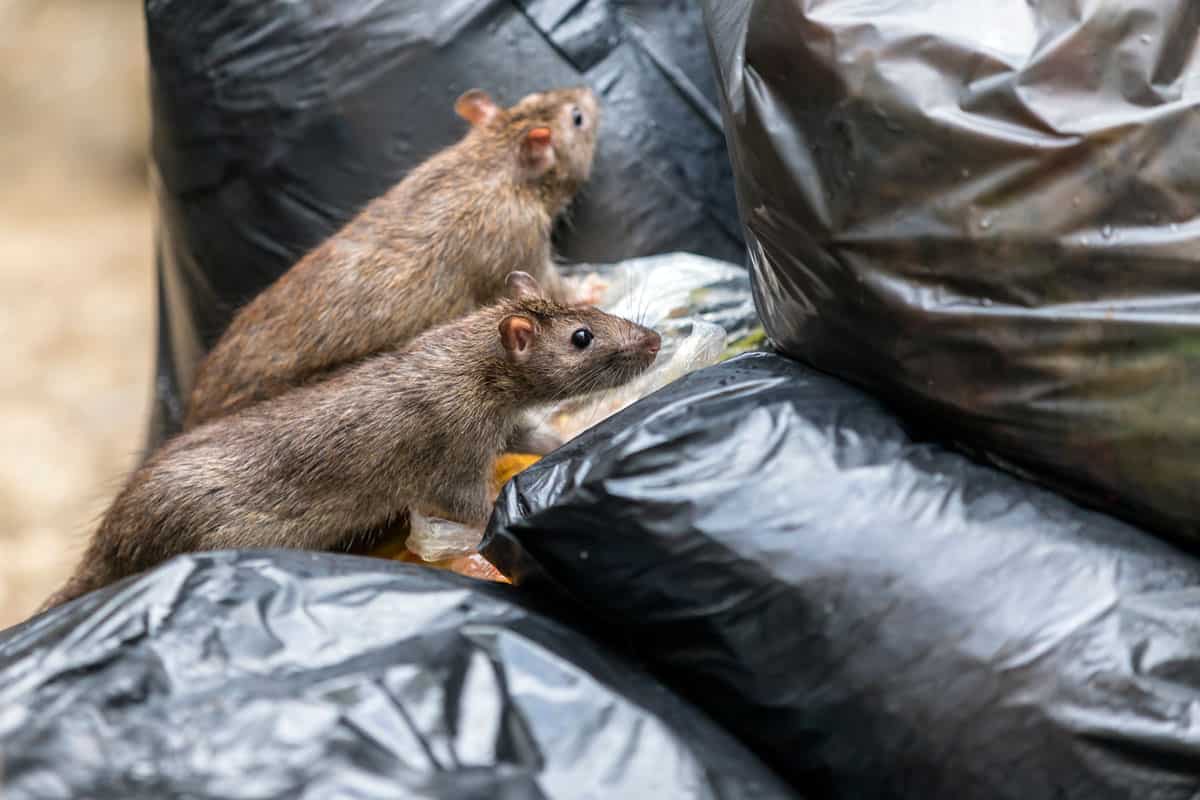
Mice can eat through plastic and Mylar bags. You can put these bags inside sturdier, food-grade containers for additional protection. Removing the mice's access to your stored food will also help you get rid of these pests effectively as you deprive them of their food source inside your house.

